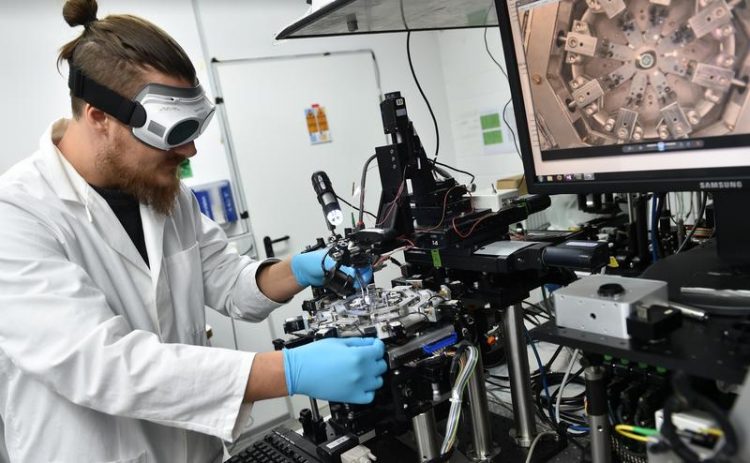Correcting presbyopia with the laser

In order to better predict eye surgeries in the future, scientists at the LZH have developed both a mechanics as well as an optics model of the eye. Photo: LZH
For the RayFEye project, the scientists of the LZH have developed both a mechanics and an optics model.
The mechanical model was used on test eyes (a by-product of the animal) to examine how laser incisions in the lens and the cornea influence their refraction behavior.
Based on these data, the researchers then developed a biomechanical model that can also be analyzed for optical imaging performance.
The model is supposed to predict the optimal placement and the expected vision of the patient before surgery.
The long-term goal is to develop gentle surgical methods and to replace clinical studies through virtual studies.
About RayFEye
In addition to the LZH, the Optimo Medical AG (formerly Integrated Scientific Services AG), which is developing the OptimEyesTM software, and the ROWIAK GmbH, the manufacturer of the laser system, are involved in the project.
The joint project “Ray tracing in ophthalmic finite element models for predicting visual acuity enhancement” (RayFEye) was funded within the framework of the Eurostars program by the Federal Ministry of Education and Research (BMBF) and by the Swiss State Secretariat for Education, Research and Innovation (SERI) under the grant number 01QE1545B.
Laser Zentrum Hannover e.V.
Dipl.-Biol. Lena Bennefeld
Communication Department
Hollerithallee 8
D-30419 Hannover
Germany
Tel.: +49 511 2788-238
Fax: +49 511 2788-100
E-Mail: presse@lzh.de
Internet: www.lzh.de
Media Contact
All latest news from the category: Medical Engineering
The development of medical equipment, products and technical procedures is characterized by high research and development costs in a variety of fields related to the study of human medicine.
innovations-report provides informative and stimulating reports and articles on topics ranging from imaging processes, cell and tissue techniques, optical techniques, implants, orthopedic aids, clinical and medical office equipment, dialysis systems and x-ray/radiation monitoring devices to endoscopy, ultrasound, surgical techniques, and dental materials.
Newest articles

A ‘language’ for ML models to predict nanopore properties
A large number of 2D materials like graphene can have nanopores – small holes formed by missing atoms through which foreign substances can pass. The properties of these nanopores dictate many…

Clinically validated, wearable ultrasound patch
… for continuous blood pressure monitoring. A team of researchers at the University of California San Diego has developed a new and improved wearable ultrasound patch for continuous and noninvasive…

A new puzzle piece for string theory research
Dr. Ksenia Fedosova from the Cluster of Excellence Mathematics Münster, along with an international research team, has proven a conjecture in string theory that physicists had proposed regarding certain equations….



